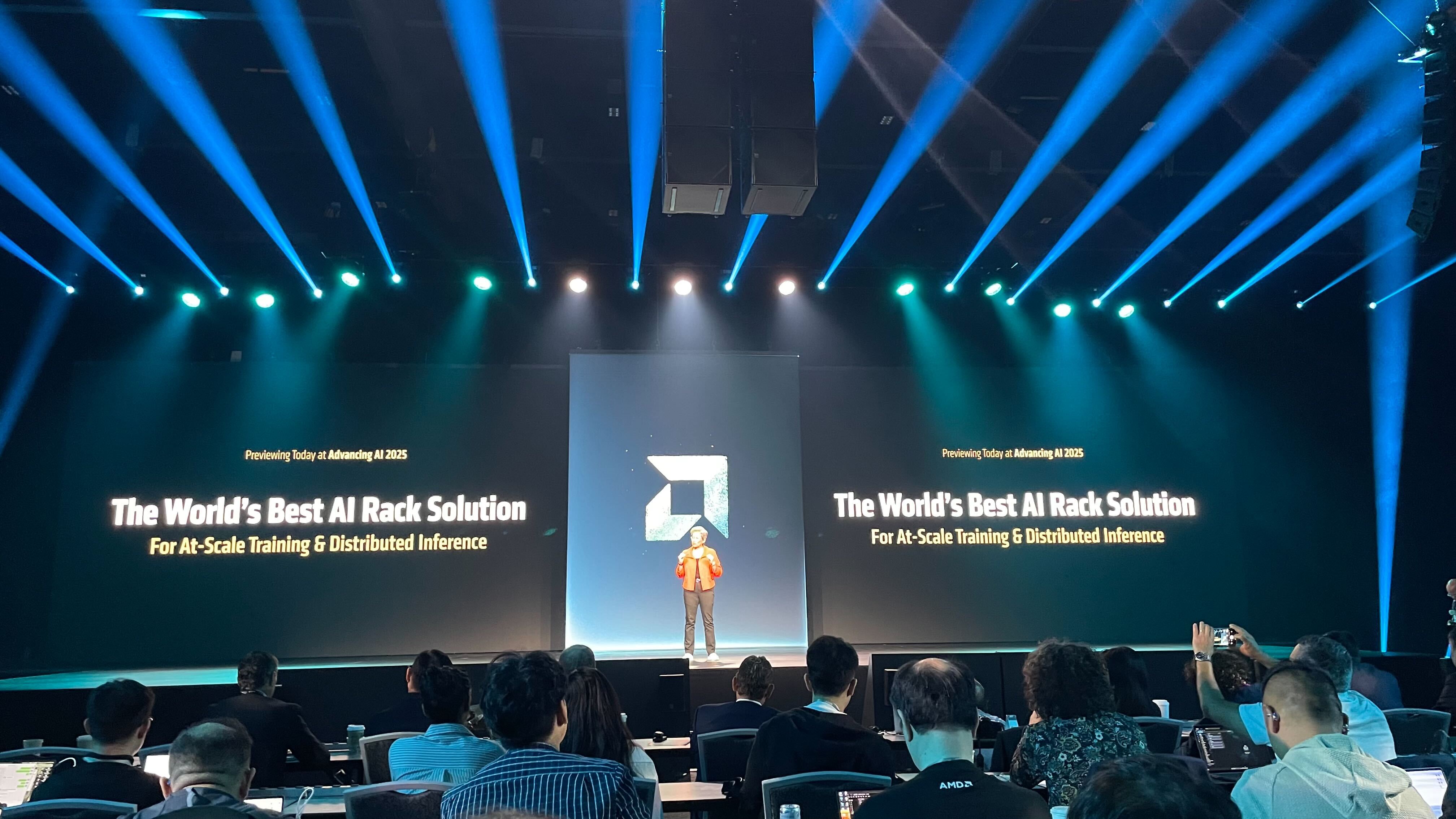AMD has taken the wraps off a new, fully integrated, rack-scale AI infrastructure solution aimed at both frontier model training and large-scale AI inference.
The product, dubbed Helios, was revealed by AMD CEO Lisa Su at the company’s latest Advancing AI conference in San Jose, California.
“Helios is truly a game changer,” said Su during her keynote at the event. “For the first time, we’ve architected every part of the rack as a unified system that’s combining our CPUs, our GPUs, our Pensando NICs and our ROCm software all together in one platform, and it’s really purpose built for the most demanding AI workloads.”
Speaking to press ahead of the launch, Andrew Dieckmann, CVP and GM for AMD’s data center GPU business, said: “[Helios] will set the new standard for rack scale AI (and) we expect Helios to deliver significant advantages over the best 2026 rack scale solutions from our competition.”
“We have competitive flops, we have 50% more HPM memory capacity, we have 50% more HPM memory bandwidth, and up to 50% more scale our bandwidth,” Dieckmann continued.
“These advantages translate directly into faster model training and better inference performance and hugely advantaged economics for our customers.”
Under the hood of the Helios AI rack
Helios, when it ships in 2026, will feature AMD’s latest and greatest chipsets. The Instinct MI400 GPU series, also available in 2026, is – according to Dieckmann – the most advanced accelerator the company has ever built.
“It’s designed to run hundreds of millions and trillion parameter models and train them and provide inferencing on them.
It features 40 petaflops of FP4 performance, 20 petaflops of FP8, 432 gigabytes of HBM per GPU and supports almost 20 TB/sec of HBM memory bandwidth. [Each chip] also supports up to 300 GB/sec of scale-up bandwidth, enabling high bandwidth interconnect across racks and clusters,” said Dieckman.
Aside from the MI400, the system also features upcoming AMD Zen 6-based Epyc Venice CPUs and AMD Pensando Vulcano network interface cards (NICs), all of which are coming in 2026 as well.
Delegates at Advancing AI also got a brief glimpse of AMD’s future AI plans, with the company moving to an annual cadence of AI infrastructure releases.
In 2027, the company plans to release a “next-gen AI rack” that will also feature AMD Pendando Vulcano NICs, as well as Epyc Verano – the successor to Venice – and MI 500 Series Instinct GPUs.
MORE FROM ITPRO
Source link
